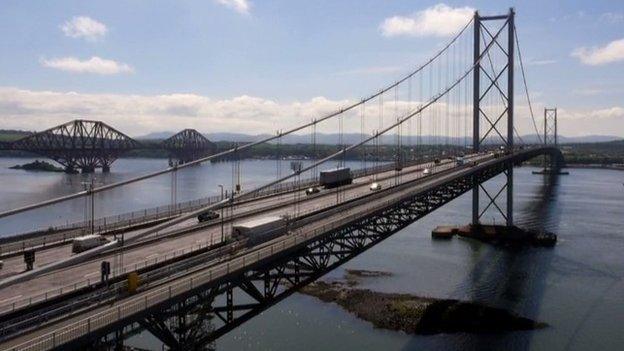Why is the Forth Road Bridge closed?
- Published
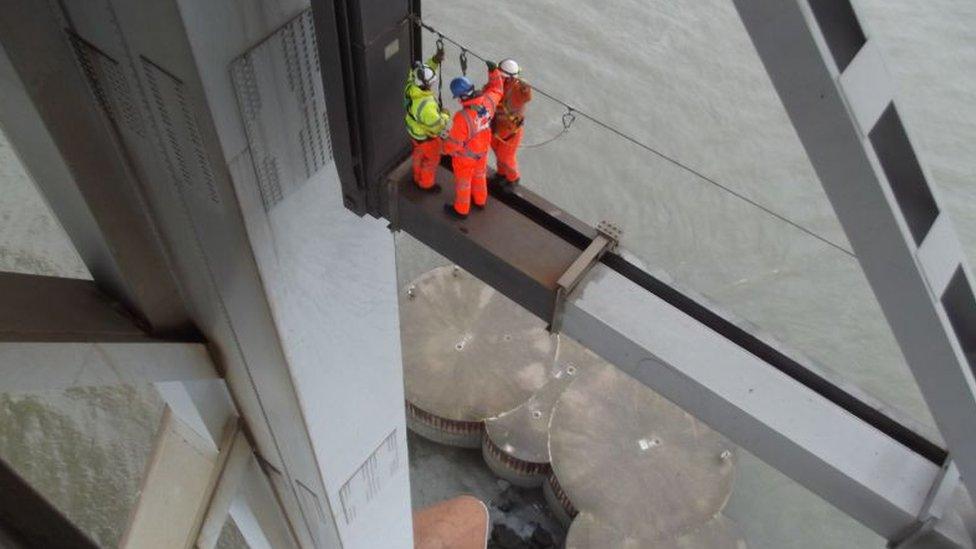
Safe access to carry out the repair is the first challenge:
The Forth Road Bridge is to be closed until new year because of structural defects. The 51-year-old bridge has been hit by numerous problems over the past decade. What has happened this time?
From the end of next year, the Forth Road Bridge will cease to be the most important link between Fife and Edinburgh when it is replaced by the new Queensferry crossing.
The decision to build a new crossing came after years of problems with corrosion in the steel cables which support the existing suspension bridge's 13,800-tonne weight.
However, the latest closure is for a completely different failure.

Engineers showed pictures of the crack in the truss under the bridge carriageway
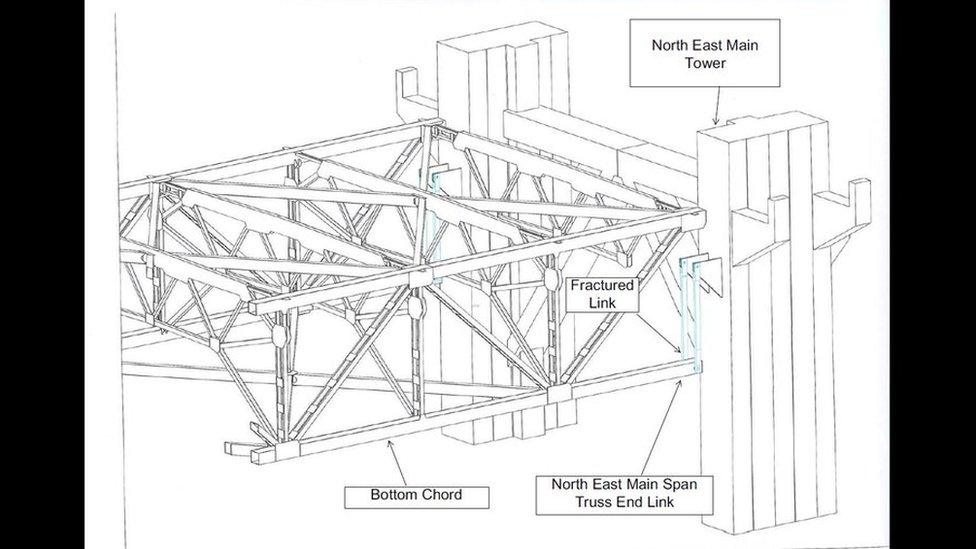
The diagram shows the location of the defective steel component
Chartered engineer Mark Arndt, from maintenance contractor Amey, told a media conference he had been faced with an "unprecedented set of circumstances".
He described the fault as a failure of the "inner link support beam to the North east tower truss end link".
The engineer went on to explain how a crack of about 20mm in width had appeared in the load-bearing link.
If the same had gone on to happen on the other side, the road deck could have fallen by a minimum of 150mm (6in).
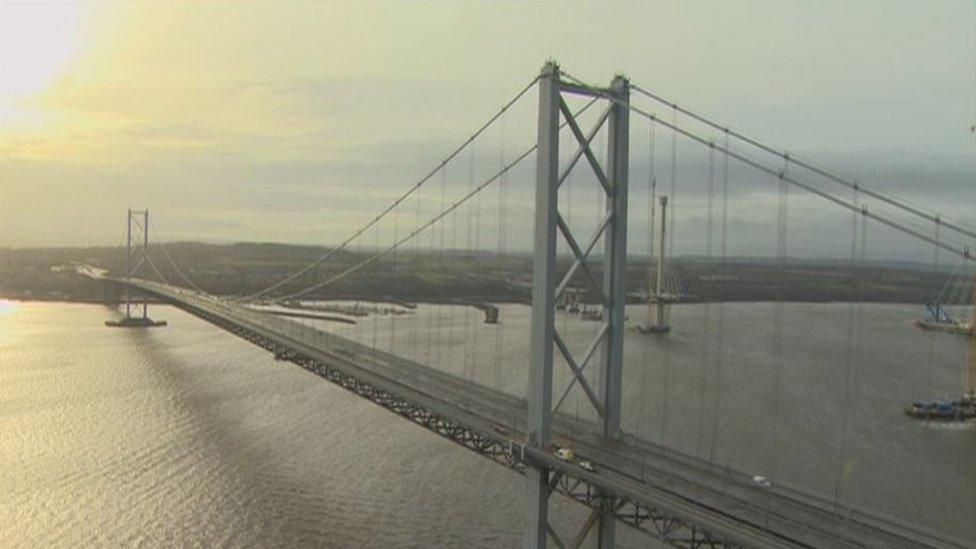
The Forth Road Bridge will be closed for at least three weeks
Mr Arndt said: "Should this have failed and the deck did drop, that poses an immediate safety risk because it could happen very quickly.
"The other issue is that the load is then supported on other elements that are not designed to take it. Instead of being the end of the year to get the repair implemented you would be talking months."
Mr Arndt said "fatigue and over-loading over the course of the bridge's 50-year lifespan" had led to the "shear failure" at the bottom of the truss - in other words the steel of the link fractured and became detached from the rest of the load-bearing structure.
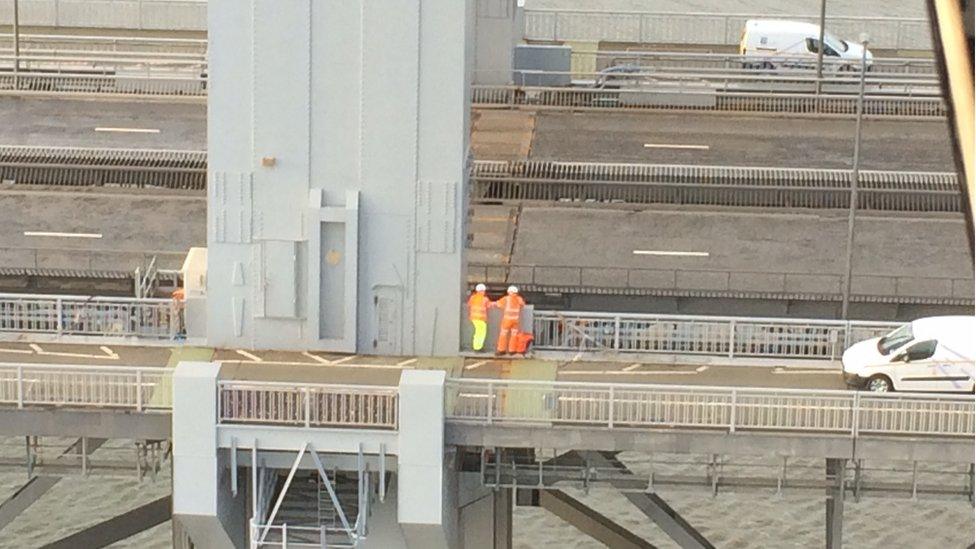
The engineer said: "Shear failures happen very quickly. It is very difficult to predict when they might happen but when they happen it is very quick and very significant.
"This is the main support below the carriageway at the point where the bridge cables meet the tower."
He said detailed non-destructive testing was carried out on the adjacent supporting members and they found the load was "propagating" there.
Mr Arndt was concerned that a similar fault could appear on the other side of the tower support leading to more damage and safety implications.
"As shear failures happen quickly and unpredictably we were left with no alternative but recommend the bridge be closed," he said.
"It is an unprecedented set of circumstances that we faced here. Independent opinion was sought throughout the process. It is a complex engineering challenge at a very difficult to access location."
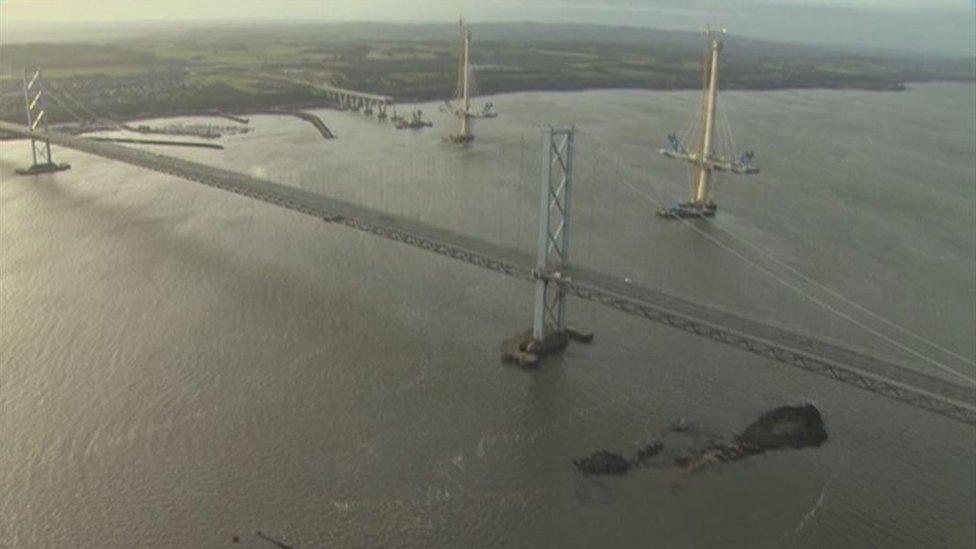
The Queensferry crossing should open at the end of next year
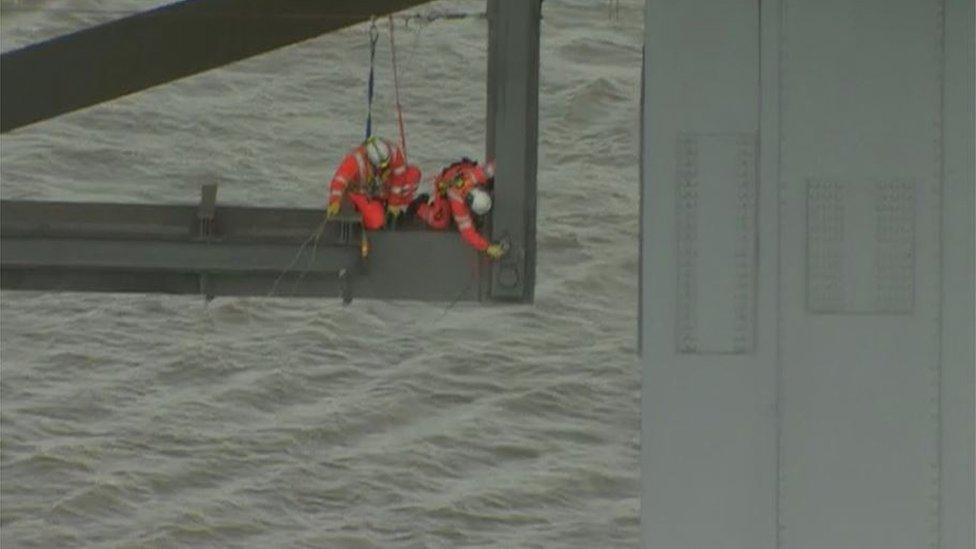
The problem was first discovered during a planned routine inspection on Tuesday afternoon.
The southbound carriageway was closed that evening to "remove live-loading from the carriageway above the defective area".
A contraflow was put in place and on Wednesday a full-scale technical assessment began which worked through the night into Thursday.
Mr Arndt said work on an interim repair had been ongoing but the structural assessment indicated "significant over-stress at this and other locations as a consequence of this failure".
At 14:30 on Thursday the bridge was closed to HGVs because of the "over-stress" on the defective areas.
At midnight it was closed completely and will remain shut for at least three weeks.
- Published4 December 2015
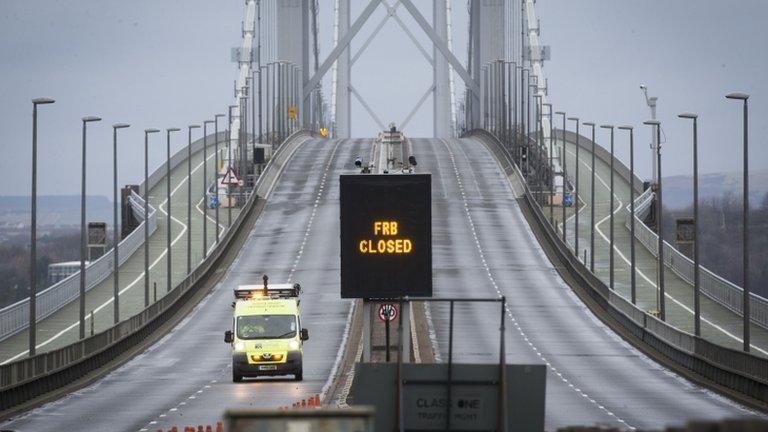
- Published2 December 2015
